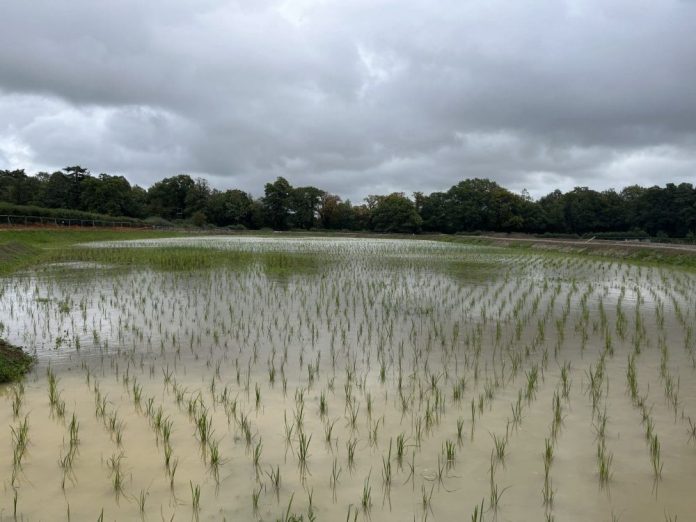Nature-based water treatment solution will create a valuable ecological and community asset in West Sussex.
A new integrated constructed wetland (ICW) to further treat wastewater has been completed at Staplefield Wastewater Treatment Works in West Sussex with the planting of more than 80,000 native wetland plants, shrubs and trees.
The wetland is a nature-based water treatment solution that will help remove phosphorus and other pollutants from water before it is discharged back into the River Ouse. Staplefield ICW has been built by Solutions by Nature, a joint venture between Binnies and Salix (both part of the RSK Group), with VESI Environmental creating the designs. The project is being delivered for Galliford Try Binnies Joint Venture as part of the AMP7 capital programme for Southern Water.
Solutions by Nature technical director Russell Spencer (Binnies) said: “This project represents one of the first initiatives of its kind in England. After water has been through Staplefield Wastewater Treatment Works, it will be diverted into the wetland, which consists of four connected cells. Water trickles through these cells, where it is further purified, with pollutants, nutrients, metals and microplastics removed by natural processes. After this, the clean water is discharged back into the river.”
Spencer said the wetland, set in an eight-acre site, will also contribute to carbon storage, landscape improvement and the creation of a valuable ecological and community asset. “Constructing the wetland involved planting over 80,000 native wetland plants, incorporating 14 different species. According to Natural England, we have lost approximately 90% of wetland habitats over the last 500 years, so this constructed wetland creates an important and rare habitat. When fully mature, the wetland is estimated to sequester approximately eight tonnes of CO₂ per year,” he said.
Spencer said that planning for the wetland began in 2022. A feasibility study, groundwater risk assessments and other environmental assessments were completed, with construction beginning in May 2025. He said that to build the cells, the topsoil was stripped and the cells were shaped. The existing clay on-site was used to provide a natural seal, saving considerable cost compared with importing an artificial liner.
“The natural slope of the site was really well suited to enable the gravity flow of water between the cells, and the shape of the cells was designed to maximise the hydraulic retention time and the treatment of the water,” Russell said. He explained that the lowest area of the site was part of the natural floodplain of the River Ouse. Excavating it enables its use as a separate stormwater retention area, adding an additional 3500 m² of flood storage mitigation.
Cecile Stanford, project manager at Southern Water, commented: “Wetlands are an alternative to more traditional concrete, mechanical and electrical process solutions, relying on nature to assist and encourage wildlife to the area. This is a really important project that will have clear benefits for local water quality and in improving biodiversity. Already, we are seeing large numbers of swifts in the wetlands as the insect population grows.”




